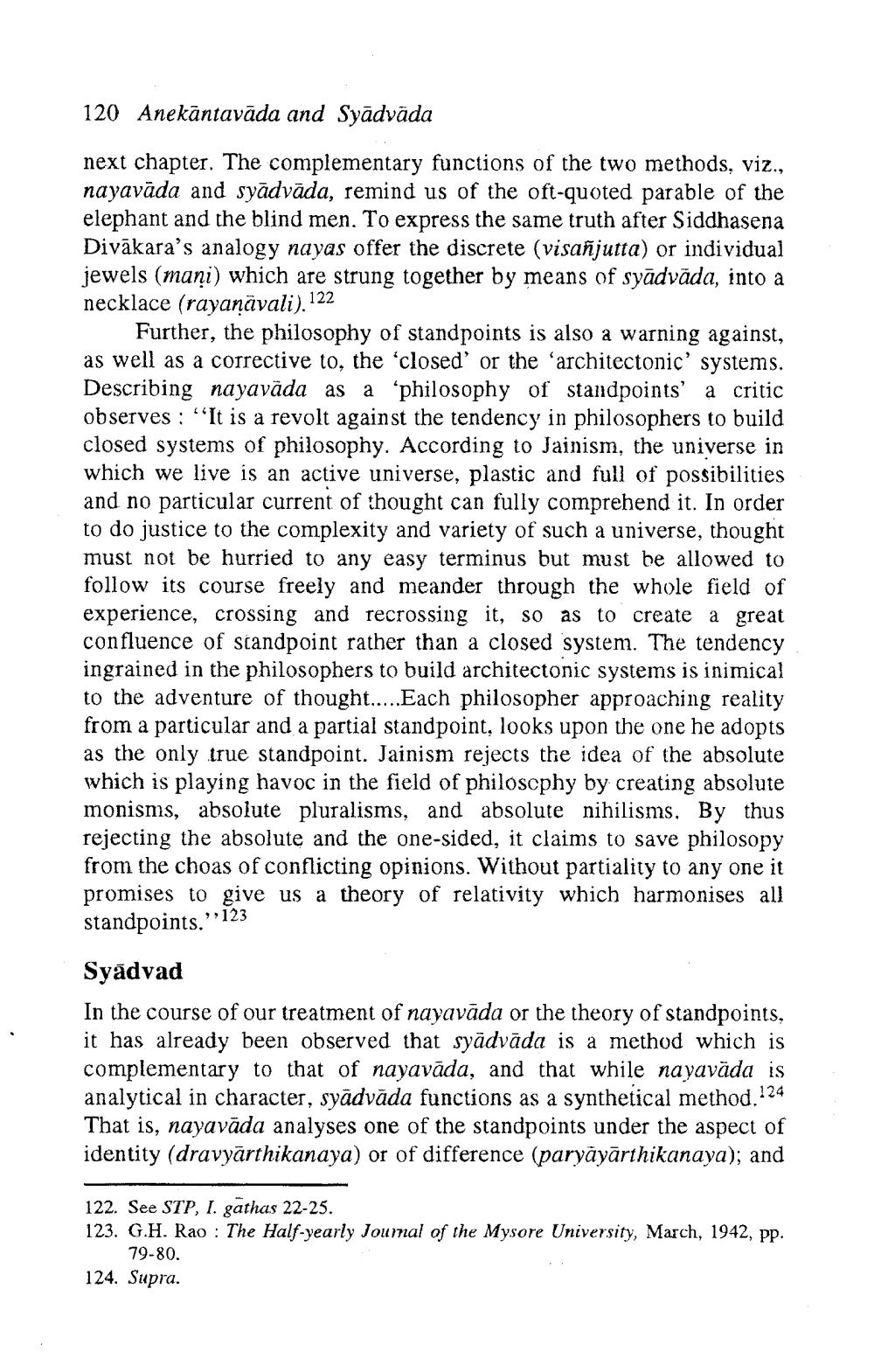________________
120 Anekāntavāda and Syādvāda
next chapter. The complementary functions of the two methods, viz., nayavāda and syādvāda, remind us of the oft-quoted parable of the elephant and the blind men. To express the same truth after Siddhasena Divākara's analogy nayas offer the discrete (visañjutta) or individual jewels (mani) which are strung together by means of syādvāda, into a necklace (rayanävali). 122
Further, the philosophy of standpoints is also a warning against, as well as a corrective to, the 'closed' or the 'architectonic' systems. Describing nayavāda as a philosophy of standpoints' a critic
It is a revolt against the tendency in philosophers to build closed systems of philosophy. According to Jainism, the universe in which we live is an active universe. plastic and full of po: and no particular current of thought can fully comprehend it. In order to do justice to the complexity and variety of such a universe, thought must not be hurried to any easy terminus but must be allowed to follow its course freely and meander through the whole field of experience, crossing and recrossing it, so as to create a great confluence of standpoint rather than a closed system. The tendency ingrained in the philosophers to build architectonic systems is inimical to the adventure of thought.....Each philosopher approaching reality from a particular and a partial standpoint, looks upon the one he adopts as the only true standpoint. Jainism rejects the idea of the absolute which is playing havoc in the field of philoscphy by creating absolute monisms, absolute pluralisms, and absolute nihilisms. By thus rejecting the absolute and the one-sided, it claims to save philosopy from the choas of conflicting opinions. Without partiality to any one it promises to give us a theory of relativity which harmonises all standpoints.":123
Syādvad In the course of our treatment of nayavāda or the theory of standpoints, it has already been observed that syādvāda is a method which is complementary to that of nayavāda, and that while nayaväda is analytical in character, syadvāda functions as a synthetical method.!24 That is, nayavāda analyses one of the standpoints under the aspect of identity (dravyārthikanaya) or of difference (paryāyārthikanaya); and
122. See STP, I. gathas 22-25. 123. G.H. Rao : The Half-yearly Journal of the Mysore University, March, 1942, pp.
79-80. 124. Supra.




